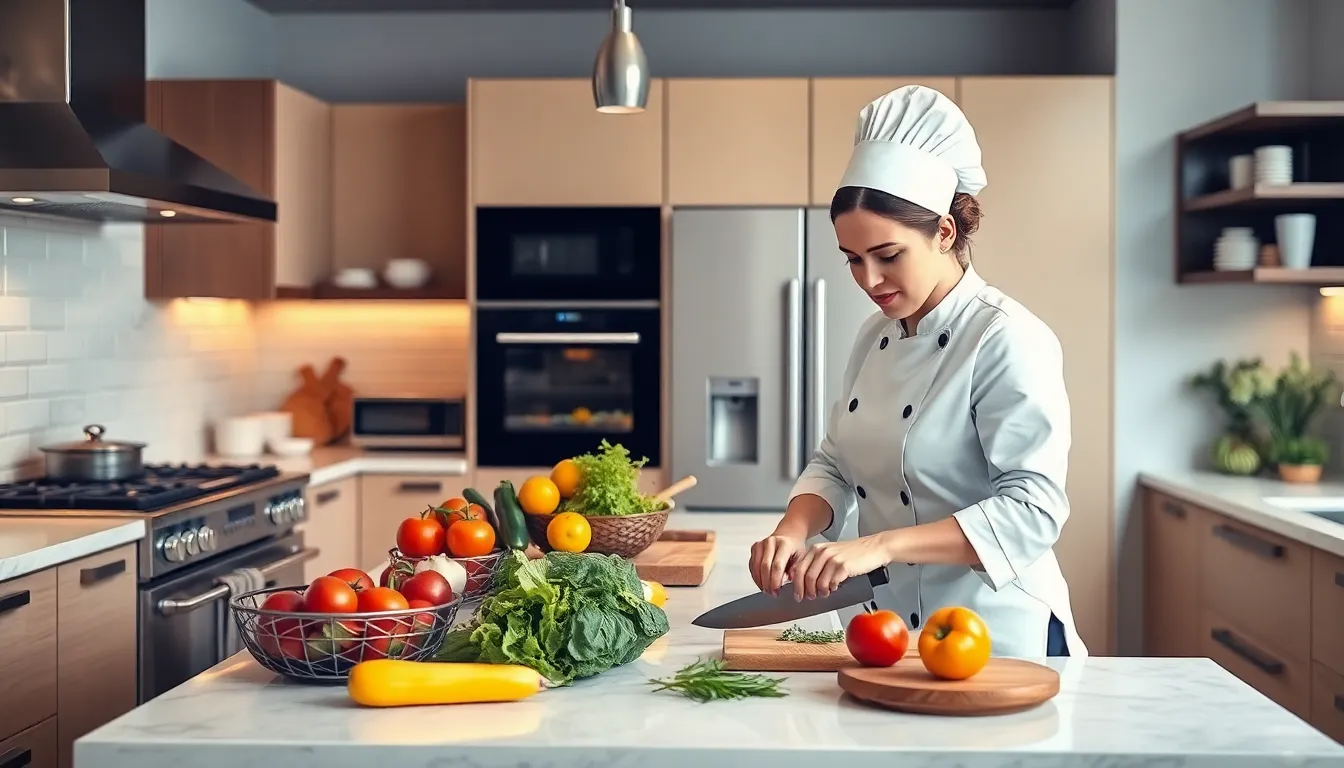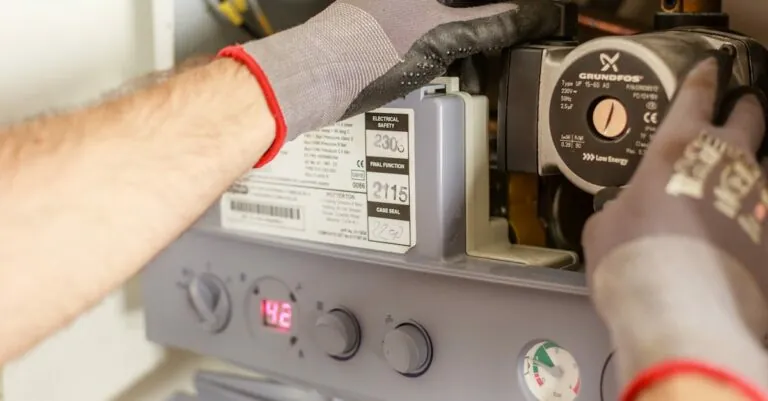In the culinary world, a smooth kitchen workflow is the secret sauce to success. Picture this: a bustling kitchen where every pot, pan, and spatula dances in harmony, creating delicious meals without the chaos of a culinary circus. An efficient kitchen isn’t just about whipping up gourmet dishes; it’s about transforming the cooking experience into a delightful symphony of flavors and fun.
Table of Contents
ToggleUnderstanding Efficient Kitchen Workflow
Effective kitchen workflow maximizes productivity and minimizes stress. It enables chefs to prepare meals efficiently while maintaining a pleasant cooking atmosphere.
Definition and Importance
Efficient kitchen workflow refers to organized movements and processes in the kitchen that optimize meal preparation. A well-planned workflow enhances speed and efficiency, making it easier to handle multiple tasks simultaneously. It ensures that every tool, ingredient, and station is accessible and properly arranged. Streamlined workflows empower chefs to focus on creativity, resulting in high-quality dishes prepared quickly. Enhancing coordination among team members also contributes to kitchen productivity. A dedicated and systematic approach directly impacts customer satisfaction and overall business success.
Common Challenges
Several issues can disrupt an efficient kitchen workflow. Limited space can hinder movement and make accessing tools cumbersome. Insufficient training often leads to misunderstandings and mistakes among team members. Managing time effectively poses another challenge, especially during peak hours when demand spikes. Disorganization creates additional obstacles, cluttering work areas and slowing down production. Resistance to change may also impede the implementation of more efficient systems. Addressing these common challenges fosters better collaboration and ultimately improves kitchen performance.
Key Elements of Efficient Kitchen Workflow

Efficient kitchen workflow relies on several critical elements that promote organization and speed. Attention to layout, design, equipment, and tools facilitates seamless meal preparation.
Layout and Design
A well-thought-out layout enhances movement and minimizes disruptions. Positioning workstations, storage areas, and appliances strategically helps streamline processes. The work triangle concept, involving the stovetop, refrigerator, and sink, maximizes efficiency by reducing unnecessary steps. Incorporating adequate counter space allows for food preparation without clutter. Additionally, keeping frequently used items within arm’s reach increases productivity. Thoughtful design fosters an environment that supports multitasking, particularly when catering to a busy kitchen.
Equipment and Tools
High-quality equipment and tools are essential for optimizing kitchen workflow. Chefs benefit from investing in reliable appliances, such as food processors, blenders, and ovens. These tools significantly reduce preparation time for various tasks. Furthermore, using sharp cutting utensils and proper kitchen gadgets can enhance precision and speed during cooking. Regular maintenance of these items ensures they function optimally, thus preventing delays. Proper inventory management prevents shortages, ensuring all necessary tools are available when needed. Overall, equipping a kitchen with the right tools leads to effective task management and improved meal delivery.
Strategies for Improving Kitchen Workflow
Improving kitchen workflow involves implementing effective strategies that enhance productivity and efficiency. Two key areas for focus are meal planning and workstation organization.
Meal Planning and Preparation
Creating a detailed meal plan significantly reduces preparation time. It allows chefs to organize ingredients and streamline cooking processes. Efficient meal prep involves gathering all necessary ingredients before starting. This approach minimizes interruptions while cooking. Additionally, pre-chopping vegetables and marinating proteins in advance decreases overall cooking time. Utilizing storage containers effectively helps maintain ingredient freshness. Maintaining a clear timeline for meal prep tasks aids in keeping the workflow steady and productive.
Organizing Workstations
Strategically organizing workstations fosters a fluid cooking environment. Assigning specific tasks to designated areas minimizes movement and enhances efficiency. For instance, placing the prep station close to the cooking area decreases the distance between tasks. Ensuring that frequently used tools and ingredients are easily accessible supports a smooth workflow. Implementing labeled storage systems assists in quick retrieval of items. Using clear surfaces also helps avoid clutter during busy cooking times. Maintaining an organized kitchen layout can lead to improved speed and an overall better cooking experience.
Technology in the Kitchen
Technology plays a crucial role in streamlining kitchen workflows. Integrating various tech solutions enhances productivity and improves cooking experiences.
Smart Appliances
Smart appliances automate tasks and provide real-time data, making cooking more efficient. Refrigerators can now track inventory levels, ensuring chefs always know what ingredients are available. Ovens with smart technology allow precise temperature control, reducing the risk of overcooking. Furthermore, dishwashers equipped with intelligent sensors optimize water and energy usage, contributing to a sustainable kitchen. These appliances not only save time but also enhance overall meal preparation, making cooking tasks smoother.
Kitchen Management Software
Kitchen management software offers powerful organizational tools that improve workflow. This software streamlines inventory management by tracking ingredient usage and expiration dates. Scheduling features assist in task delegation, ensuring every team member knows their responsibilities. Recipe management capabilities allow for easy access to cooking instructions, facilitating faster meal prep. Some software integrates with smart appliances, creating a cohesive tech ecosystem that promotes efficiency. Implementing this technology leads to better communication and coordination within the kitchen, ultimately elevating service quality.
An efficient kitchen workflow is essential for any culinary operation aiming for success. By prioritizing organization and strategic planning, chefs can create an environment that promotes creativity and reduces stress. Implementing thoughtful layouts and utilizing the right tools can significantly enhance productivity.
Embracing technology not only streamlines processes but also fosters better communication among team members. As kitchens evolve, adapting to new methods and innovations will keep workflows smooth and effective. Ultimately, a well-structured kitchen not only improves meal preparation but also elevates the overall dining experience for customers.





